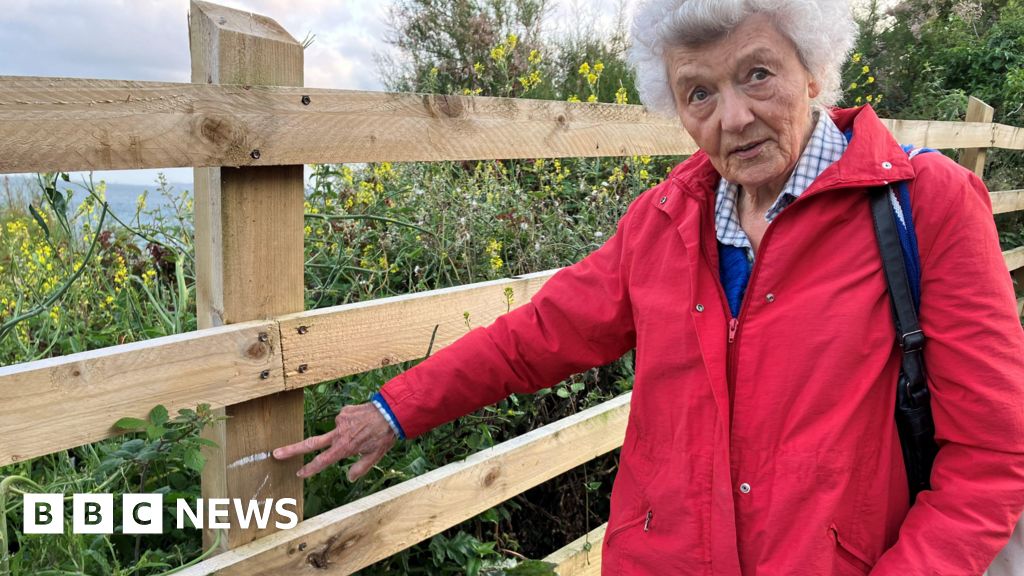- Tennis
Moving to a new neighborhood or state
时间:2010-12-5 17:23:32 作者:Life 来源:Cricket 查看: 评论:0内容摘要:“Olas de Estilo: Ropa de Baño a Través de las Décadas” se abrió al público el sábado y se podrá visitar hasta el 5 de octubre. La exposición presenta alrededor de 50 piezas históricas de ropa de baño de la extensa colección del museo, que cuenta con más de 2.000 textiles.“Olas de Estilo: Ropa de Baño a Través de las Décadas” se abrió al público el sábado y se podrá visitar hasta el 5 de octubre. La exposición presenta alrededor de 50 piezas históricas de ropa de baño de la extensa colección del museo, que cuenta con más de 2.000 textiles.
, along with worker shortages and declining birth rates. More than half of rural hospitals have stopped offering labor and delivery services, another recent analysis from the Center for Healthcare Quality and Payment Reform showed. That can lead to longer travel times and awhen she was pregnant with her second child. There is no labor and delivery unit at the hospital in Rocky Mount, Virginia, and a hospital about 40 minutes away closed in 2022. Ratliff, who is Black, instead went to Salem — more than an hour away — for every prenatal visit. She ran through all of her paid time off, and had no paid maternity leave.

She did, however, have a doula. The doula is Black and her services were covered by Medicaid — a benefit Virginia started offering in 2022.“I really did want somebody else to just help advocate, especially since with women of color, the mortality rates are higher. So I was like, ‘anything can happen,’” she said. “My family members never had good experiences up here at these doctors’ offices, even just for regular appointments.”In the state to the South, immigration status can complicate health care. About 150,000

and their family members live in North Carolina. Many of them speak Spanish, lack permanent legal status and don’t qualify for Medicaid — so they’ll pay out of pocket at clinics or go without medical care.A few organizations in the state provide mobile health clinics. Campbell University’s Community Care Clinic, in partnership with Sembrando Salud by NC FIELD did its first outreach in 2017 and diagnosed 68 people with diabetes. Four of them had very high blood sugar levels, said Dr. Joseph Cacioppo, a clinic volunteer, and chairman of the Community and Global Health program at Campbell.

“Three of them were lucky; there was minimal or no organ damage at the time we found them,” he said, adding the fourth has kidney failure and liver damage “because he went so many years without knowing he was diabetic.”
There’s something else communities should strive for, too, said NORC Walsh Center for Rural Health Analysis director Alana Knudson: a positive attitude and outlook.and told Locke, at the time a UAB transplant surgeon, she’d like to try one. In April 2023, Locke filed an FDA application seeking an emergency experiment, under rules for people like Looney who are out of options.
The FDA didn’t agree right away. Instead, the world’s first gene-edited pig kidney transplants went to two sicker patients last spring, at Massachusetts General Hospital and NYU. Both also had serious heart disease. The Boston patient recovered enough to spend about a month at home before dying of sudden cardiac arrest deemed unrelated to the pig kidney. NYU’s patient had heart complications that damaged her pig kidney, forcing its removal, and she later died.Those disappointing outcomes didn’t dissuade Looney, who was starting to feel worse on dialysis but, Locke said, hadn’t developed heart disease or other complications. The FDA eventually allowed her transplant at NYU, where Locke collaborated with Montgomery.
Moments after Montgomery sewed the pig kidney into place, it turned a healthy pink and began producing urine.Even if her new organ fails, doctors can learn from it, Looney told the AP: “You don’t know if it’s going to work or not until you try.”
- 最近更新
- 2025-07-07 11:04:47Four Palestinians killed in occupied West Bank by settlers, Israeli troops
- 2025-07-07 11:04:47Trump says he doesn’t care if US, Iran sign a nuclear agreement
- 2025-07-07 11:04:47Hospital patients let down by cancelled flights
- 2025-07-07 11:04:47Iran moves to punish ‘spying’ as it proclaims victory over Israel, US
- 2025-07-07 11:04:47Iran moves to punish ‘spying’ as it proclaims victory over Israel, US
- 2025-07-07 11:04:47'Misfits of the 1990s' celebrated in exhibition
- 2025-07-07 11:04:47The ‘12-Day War’ ended with an attack on Qatar. Why didn’t it escalate?
- 2025-07-07 11:04:47The 'peacock of Savile Row' on dressing stars for the Met Gala
- 热门排行
- 2025-07-07 11:04:47Best high-yield savings accounts of 2025: AOL editor picks
- 2025-07-07 11:04:47Roof of historic Ming Dynasty tower collapses in China
- 2025-07-07 11:04:47Bill Nighy, Mathew Horne, WWE’s Jordynne Grace Board Fantasy Film ‘Welcome to Paradis…
- 2025-07-07 11:04:47Trump calls for cancellation of Netanyahu’s corruption trial in Israel
- 2025-07-07 11:04:47AIRROBO Smart Pool Robot Vacuum$370$600Save $230with coupon
- 2025-07-07 11:04:47Trump calls for cancellation of Netanyahu’s corruption trial in Israel
- 2025-07-07 11:04:47even the magazines you subscribe to
- 2025-07-07 11:04:47Misleading posts obtaining millions of views on X
- 友情链接
- US judge allows company to train AI using copyrighted literary materials The poppiest pop-ups of summer 2025 Trump shares texts from NATO chief praising ‘decisive action’ on Iran The joy of the office packed lunch Nato chief Rutte praises Trump for making Europe ‘pay in a BIG way’ Oil prices pare losses as ceasefire threatened Cuomo vs Mamdani: New York mayoral race showcases Democratic rift The joy of the office packed lunch Israel, Iran in shaky ceasefire as Trump lashes out at both As Israel-Iran war escalates, Ukraine fears ‘more losses’ to Russia US-Israel-Iran conflict: List of key events, June 24, 2025 Is the 12-day Israel-Iran war really over – and who gained what? Dozens killed in Russian attacks on Ukraine, Dnipro worst hit Nato chief Rutte praises Trump for making Europe ‘pay in a BIG way’ Dnipro church hit by Russian missile mid-service US sanctions alleged leader of Venezuelan gang Tren de Aragua England beat India in thrilling first Test finale Smash hits: nine Londoners’ favourite public courts US judge allows company to train AI using copyrighted literary materials Trump signals sanctions relief for China to buy Iran’s oil ‘It’s not peace – it’s a pause’: Iranians sceptical ceasefire will hold Jeff Bezos’s wedding draws storm of protest in Venice Palestine Action supporters protest against UK ban Nato chief Rutte praises Trump for making Europe ‘pay in a BIG way’ Trump pushes Israel and Iran to preserve ceasefire US judge allows company to train AI using copyrighted literary materials Is the 12-day Israel-Iran war really over – and who gained what? Why global imbalances do matter Dozens killed in Russian attacks on Ukraine, Dnipro worst hit US Congress plots big tax cut for private credit investors
